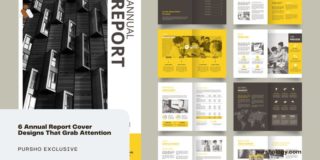by Adam Noar

Icons go hand-in-hand with modern-day presentations.
If for some strange reason you’ve been living under a rock
for the past 100 years and don’t know what an icon is, an icon is simply a graphic
symbol that represents an object.
Icons have evolved over the years and today I’m going to share 7 types of icons that will look great in your next PowerPoint presentation.
Enjoy!
#1.) Line Icons
Line icons are a direct evolutionary branch of the original pixel art icons, being one of the current popular styles practiced, due to their ability to portray powerful imagery using simple shapes and outlines.
For a
design philosophy, the style itself uses the same principle of separating the
object’s different composing sections using hard, thick lines, but it does so
using strokes as opposed to individual squares. This change of technique has
made it easier for the designer to create and adjust them, since you’re now
dealing with shapes and paths instead of individual pixels.
We love this icon style and use them in our presentations all the time (including our Influencer PowerPoint template. What’s nice about line icons is that they are easy to create once you’ve practiced it a few times.
Don’t want to make your own line icons? We get it! A great place to find awesome looking line icons (and all other great icons for that matter) is flaticon.com. Here you can download tons of icons for free and if you want to pay for access to all the premium icons it’s less than $10 bucks a month.
#2.) Glyph Icons
A “glyph”
is a visual style, where the objects are represented using monochromatic shapes
that can have subtle empty spaces separating their different composing sections
(as seen below).
While these icons look simple in nature, the style can be really effective, especially when used in smaller sizes, since you can depict the object using a minimalist but still comprehensible result, which is why it can be seen as the precursor of flat design.
#3.) Flat Icons
Flat icons have been extremely popular recently. These icons are all about breaking the object down to its bare essentials, removing as many details as possible in the process (as seen in the example below).
This led to the creation of a new type of icon that was easy to understand and use, due to the fact that the focus had been redirected onto the careful use of colors and basic geometric shapes.
Eventually,
designers saw the potential that flat design had, and they started creating new
icons based on clear shapes, free of any gradients or drop shadows, and developed
the style into what it is now.
#4.) Material Icons
As
things started changing with flat design, in 2014 Google decided to embrace the
change and brought designer Matias Duarte aboard to help
create its own visual language, which it called Material Design.
Now, if
skeuomorphism had too much going on, and flat design was well, too flat, Google
positioned itself somewhere in the middle by bringing back the highlights and
shadows but giving them a subtler presence, creating a visual style where
objects are stacked over one another. They went even further and put together a
pretty extensive online
guide, where they talk about everything from material properties to
layout principles and color styles, which makes it really easy to jump in and
adopt the style.
In my
opinion, material icons are a nice addition to flat design, and as long as
Google has something to say, they will continue to be popular.
#5.) Dimensional Icons
Dimensional
icons are really kind of difficult to put a label on, since it sits somewhere
between the boundaries of line icons and isometric ones, borrowing key elements
from both.
I’ve almost broken my brain trying to define it, and I finally came to the conclusion that the best fit would be dimensional since the process focuses on adding dimension or depth to the icon from a horizontal perspective.
The way
it’s done is by presenting both the front and one of the object’s sides, using
rectangular shapes for everything that is not of circular or curved nature. For
the objects that fall within the second category, they are usually represented
using one perspective, the front, which creates a contrasting and at the same
time cohesive balance between the icon’s composing elements.
In
terms of difficulty, the style is somewhat easy to understand and master as
long as you’ve got a basic understanding of perspective, so that you can
correctly define and position the details needed for both the front and side
sections.
#6.) Hand-Drawn Icons
This next style of icons are hand-drawn icons. These icons are less frequently used since most of the time it’s viewed as being too “playful”.
The
style became more popular after Dropbox’s rebranding, which showed the
potential to build a truly unique identity, using hand drawn-like lines that
have a shaky nature to them.
In my
opinion, this type of icon can prove to be friendlier, since the relation
between them and the user becomes warmer because you’re dealing with symbols
that feel as if they were designed not by a computer, but rather by a living,
breathing human.
If you’re trying to create these little guys on your own it can be very difficult. Especially if you’re not used to drawing and shading, which also makes it hard to imitate, since you’re not just creating the shapes by clicking and dragging rectangles and circles. Of course, you can always download free premade ones that you find online.
#7.) Animated Icons
Lastly, we have a class of icons that is truly unique since its dynamic nature begs you to click on them.
While they might look like pure visual gimmicks, animated icons might just be the future of interaction, since they add more engagement between the presenter and audience.
No
matter what form they take (flat, line, etc.), animated icons can bring
something new and fresh to the table, due to their second state (when hovered
on), and thus double the information available to the user, since when hovered
on, they can bring useful data in a matter of seconds.
Conclusion
I hope you’ve enjoyed learnings about these different types of icons. Icons are such a simple way to add style and professionalism to a presentation.
Are there any particular icon styles that you gravitate towards more than others? Sound off in the comments below.
Cover image by Joan Sterjo

Looking For Powerpoint Design Agency?
Call Pursho @ 0731-6725516
Telegram Group One Must Follow :
For Startups: https://t.me/daily_business_reads
#Icon #Styles #PowerPoint #Presentation #Sizzle



